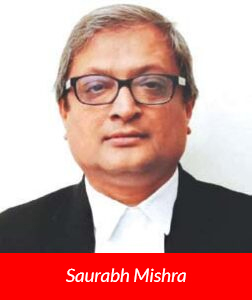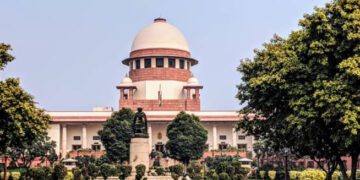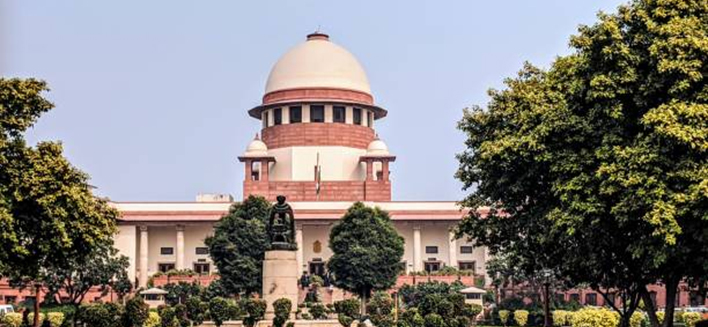 THE Supreme Court of India’s landmark judgment on December 11, 2023, affirming the abrogation of Article 370’s special status to Jammu and Kashmir (J&K), marks a significant chapter in India’s constitutional history. This decision, delivered by a Constitution bench led by Chief Justice DY Chandrachud, has profound implications on the legal and political landscape of the country.
THE Supreme Court of India’s landmark judgment on December 11, 2023, affirming the abrogation of Article 370’s special status to Jammu and Kashmir (J&K), marks a significant chapter in India’s constitutional history. This decision, delivered by a Constitution bench led by Chief Justice DY Chandrachud, has profound implications on the legal and political landscape of the country.
Historical background
The inception of Article 370 in the Indian Constitution is intimately tied to the historical context of J&K accession to India. In 1947, during the tumultuous period of India’s partition, J&K was a princely state ruled by Maharaja Hari Singh. The state faced aggressive incursions from tribal militias and, subsequently, Pakistani forces, compelling the Maharaja to seek India’s military aid. This aid was facilitated through the Instrument of Accession, which marked J&K’s conditional integration into India, granting the state significant autonomy while limiting Indian Parliament’s legislative authority primarily to defence, foreign affairs, and communications.
Article 370 emerged as a constitutional reflection of this unique arrangement, conferring special status to J&K. Initially conceived as a temporary measure to smooth the path for J&K’s eventual full integration into India, the provision evolved into a seemingly permanent fixture. This permanence was largely a result of the intricate political dynamics within J&K and the absence of a definitive framework or roadmap for its revocation.
Judicial reasoning
The Supreme Court’s deliberation on Article 370 was anchored in a meticulous examination of its historical and legal nuances. The court’s judgment, distilled from extensive legal proceedings, highlighted the transitory essence of Article 370, despite its longstanding application. Central to the court’s reasoning was the notion that J&K did not retain an element of internal sovereignty following its accession to India. This conclusion was substantiated by the terms outlined in the Instrument of Accession and the overarching constitutional framework.
By affirming that J&K had become an integral part of India, the court underlined the uniformity and indivisibility of Indian sovereignty, as enshrined in Articles 1 and 370 of the Constitution. This acknowledgment effectively nullified the premise of J&K’s special autonomous status, underscoring the temporary nature of Article 370 and reaffirming the constitutional and territorial integrity of India.
Critical elements
Nature of Article 370: The court affirmed Article 370 as a transitory provision, negating the argument of its assumed permanence post the dissolution of the J&K Constituent Assembly in 1957.
Presidential powers and state concurrence: The verdict clarified that the President’s decision to declare Article 370 inoperative did not necessitate the concurrence of the J&K Constituent Assembly. It also held that the concurrence of the state Government was not required to apply the Indian Constitution to J&K under Article 370(1)(d).
Validity of constitutional orders and Reorganisation Act: The court invalidated Constitutional Order 272, which attempted to amend Article 367 to redefine terms related to Article 370. However, this did not materially affect the outcome of the judgment. The bifurcation of J&K into Union Territories and the reorganisation of Ladakh were upheld, aligning with the powers granted under Article 3 of the Constitution.
Election and statehood restoration: A directive was issued to the Election Commission to organise elections for the J&K Legislative Assembly by September 30, 2024, with an assurance of restoring statehood as soon as feasible.
Justice Kaul’s call In a noteworthy addition, Justice Sanjay Kishan Kaul’s recommendation for a ‘Truth and Reconciliation Commission’ merits attention. This proposal, aimed at addressing human rights violations by both state and non-state actors since the 1980s, reflects an understanding of the need for healing and restoring the social fabric of J&K. This commission, drawing inspiration from similar initiatives in South Africa, is envisioned as a platform for collective truth-telling and reconciliation, rather than a punitive body.
The road ahead
The verdict’s implications extend beyond legal parameters to societal and political realms. While it legally validates the Central Government’s actions, it also opens doors to potential political and administrative challenges in J&K. The emphasis on conducting elections and restoring statehood underscores a commitment to democratic processes and federal principles.
The recommendation for a Truth and Reconciliation Commission points towards an empathetic approach to dealing with the region’s turbulent past. It suggests a path towards healing, acknowledging the deep-seated grievances and traumas endured by various communities, including the Kashmiri Pandits.
Conclusion
The Supreme Court’s judgment on Article 370 is a legal affirmation of the constitutional and territorial integrity of India. While it resolves certain legal ambiguities, it also acknowledges the complexities of J&K’s history and societal fabric. The path ahead, as envisaged by the court, is not just legalistic but also humane, aiming to weave a narrative of reconciliation and healing. As India navigates this critical juncture, the judicious implementation of these directives will determine the future trajectory of Jammu and Kashmir within the Indian Union.





























